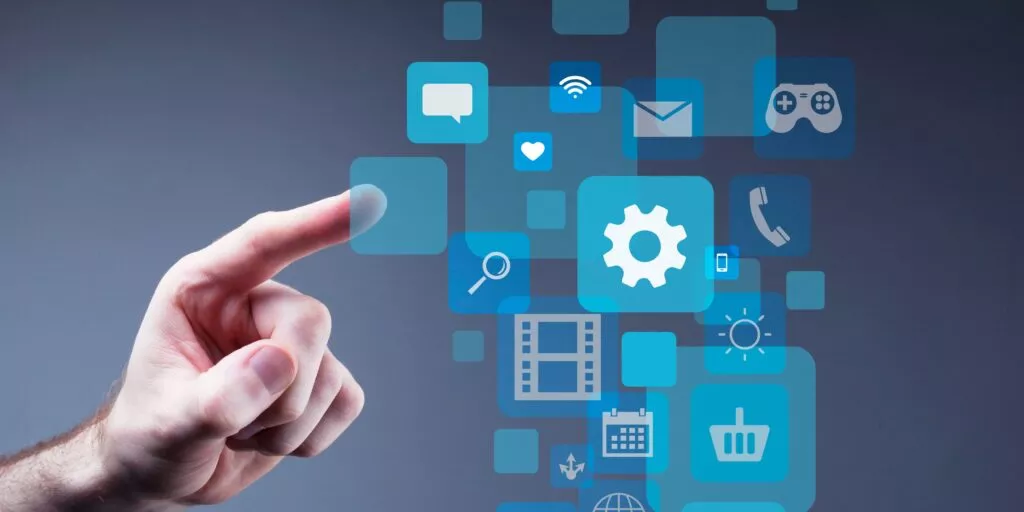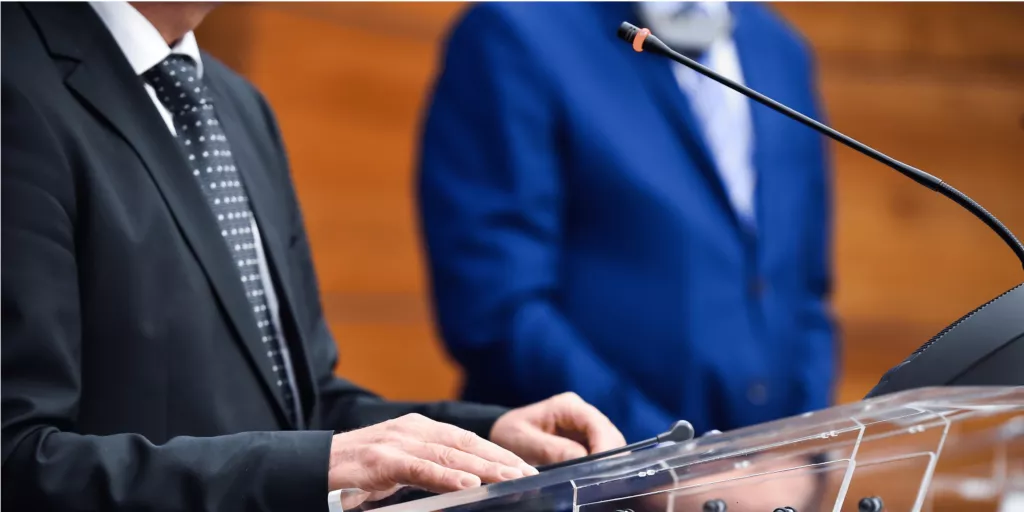2 October 2025
MTN champions Africa’s digital future
MTN champions Africa’s digital future
Back
More Africa News
MTN champions Africa’s digital future
CEO Ralph Mupita urges Africa to empower youth with tools it needs to reap the benefits of growth
Nigeria ’s minister of communications, innovation and digital economy, Bosun Tijani, has thrown down the gauntlet, challenging MTN and other private players to help push Africa’s digital transformation.
Tijani, who is on a mission to ensure Nigeria and the broader continent are at the forefront of the artificial intelligence (AI) revolution, says partnerships are key.
Building the African AI platform
During a session of the Y’ello Chair podcast series, on the sidelines of the UN General Assembly (UNGA), the minister highlighted the launch of N-ATLAS, an AI model. Tijani announced earlier this year that Nigeria would develop its own large language model (LLM).
This project, a partnership between the West African nation’s government and a number of institutions including the local startup Awarri, aims to increase the representation of Nigerian languages in global AI systems.
“Awarri was able to build the framework,” Tijani says.
“Now the same framework has been made open for other African countries to actually get on with collecting their data.
“I’m challenging MTN to also support in helping countries. Let’s fund some of this data collection. We need to mobilise resources.”
To this, MTN group CEO Ralph Mupita says: “We like these kind of partnerships. The challenge is accepted.”
Awarri, the nonprofit Data.org and two government bodies collaborated to build the LLM trained on five underrepresented Nigerian languages and Nigerian-accented English.
The problem with AI and underrepresented languages is simple: there isn’t enough data. Because most LLMs are trained on English and a handful of other widely used languages, they struggle — or fail outright— with languages that have little presence online.
The data gap fuels bias, shuts millions out of technology and puts many languages at risk.
Some want one all-purpose AI, while others prefer models tailored to each language to preserve cultural nuance.
Tijani ’s counterpart in South Africa, Solly Malatsi, is on a similar mission. In April, the communications and digital technologies minister called on the Group of 20 (G20) countries to develop a framework of rules that member states can use to regulate AI.
AI investment has grown exponentially through 2023, 2024 and 2025, driven by the rapid adoption and popularity of OpenAI’s Chat GPT since it was launched in November 2022. Policymakers are frantically working to keep pace with the innovation.
Malatsi aims to broaden the number of languages that are used by AI systems, a common criticism of the technology.
“We know that AI is only as good as the data and algorithms it is built on, and currently, both of these have serious gaps. One glaring gap is the linguistic and cultural diversity deficit in AI systems, ” he said at the time.
“There are over 7,000 languages spoken in the world, yet most AI models and digital content are trained on a tiny fraction of these — predominantly English and a handful of others.
This linguistic inequity is not just a cultural loss; it ’s a practical barrier that threatens to exclude billions from the AI-driven digital economy.”
Many see AI as a powerful tool for language preservation, capable of helping communities create data, develop educational tools and bridge communication gaps, ultimately turning a potential threat into an opportunity for revitalisation .
People, platform, partners
While some grapple with the implications of AI, others warn Africans still have a way to go in having broad access to the internet, the playing field where this innovation is taking place.
Angela Wamola, head of Sub-Saharan Africa at GSMA, says partnerships can be used to develop tools and platforms that can ultimately help the continent’s people keep pace and compete in the digital economy.
Wamola says we need to consider how we compete effectively in a world powered by AI, and reach the next stage of growth.
“Let ’s assume two teams. Africa’s team versus the world, in terms of the digital economy. This is our game, we’re trying to get to the world cup. We each have a goalkeeper, that’s a given, so each team needs to have 10 players.”
She points to two sets of recent data.
First is the latest statistics on the African population according to Worldometer, which says there are 1,549,867,579 (1.55-billion) people on the continent.
Second is the GSMA’s 2025 The State of Mobile Internet Connectivity report. This study of internet connectivity trends shows that about 500-million in Africa are online.
“That’s 30%. 1-billion Africans are not online. What does that mean? 70% of our population are stuck in the voice era. Still using voice and SMS , ” she says.
That 30% translates into three players on the African team.
“Let ’s talk about these three men [on the pitch]. Africans connected with smartphones are only 330-million and another 80-million are using feature phones. Therefore, in our analogy, of the three players on the pitch, two have a smartphone, one has a feature phone. Two are using 3G technology, and the other one may be using 4G or 5G.”
The 1-billion people who are struck in the voice era represent six players on the bench.
“Those are people who are covered by broadband technology, 3G, 4G, 5G. And out of these, six are on the bench, two have the kit, they’re wearing the uniform, but they don’t know how to play. Why? They have never gone online , ” Wamola says.
Another 660-million, that’s four of the six people who are on the bench, don’t have their kits on, but they have the opportunity to be in the game because they’re on the pitch, but just sitting on the bench.
“They don’t have any formal broadband device. And one, because we need seven, is still in the locker room. They don’t have any coverage. No 3G, 4G coverage,” Wamola says.
The GSMA is a nonprofit trade organisation that represents the interests of more than 1,000 mobile network operators worldwide, unifying the broader mobile ecosystem to advocate for industry policies, push innovation and facilitate key industry events such as the Mobile World Congress.
The association shapes mobile communications, setting standards and pushing to bring digital access to more people worldwide.
“We understand that we need to leverage the readiness of our continent by getting all those on the bench or in the locker room onto the pitch and empowering our teams to play their best game,” she says.
She says this is crucial if Africa is to harness AI and other new technologies to tackle challenges and step fully into today’s connected world. Partnerships are crucial.
Bringing Africa online
MTN has been working on ways to increase the number of customers using its data services. It is an uphill struggle since smartphones are out of reach for many South Africans.
Making devices more accessible benefits consumers and can boost both customers and data usage, increasing mobile providers’ profits.
As operators expand into messaging, streaming, finance and gaming, more consumer devices give their platforms room to grow.
GSMA says mobile operators in Africa have in recent years invested more than $40bn (about R700bn) in capital expenditure — mostly on deploying and expanding 4G networks.
In South Africa, this has translated in Vodacom and MTN each spending about R10bn on such network expansion annually in recent years. However, adoption of the technology offered by the networks continues to be hampered by low device penetration.
Mupita, who also serves as GSMA’s deputy chair globally, says MTN has been working on a number of plans, including talks with manufacturers about getting smartphones at $20 or less.
“I’m like a stuck record on this thing that we need $20 handsets,” he says.“There are smartphones that look similar to an iPhone or a Samsung. No-one wants an ugly looking phone … we have tried some of those and quickly realised that the issue was that they were clunky.”
The MTN boss highlights the progress made on this front in India, using the example of the JioBharat phone, an internet-enabled, 4G feature phone from telecoms operator Reliance Jio, designed to bridge the digital divide by providing affordable internet access and digital services to users currently on 2G networks.
The JioBharat phone costs as little as $12 (about R209).
“It ’s a cloud-based phone, so it’s not heavy on the memory and battery because it’s pulling the applications from a data centre, so they’re able to bring the cost of the handset down,” Mupita says.
Rival Vodacom recently launched a service allowing customers to pay small daily amounts towards the cost of a device.
MTN’s new South African initiative, which started in May, will run until the end of next year. In phase one, 5,000 carefully selected customers will be offered 4G smartphones. Selection will be based on usage profiles, spending patterns and tenure, and will mainly be in Gauteng. In the second phase, more than 130,000 customers nationally will be offered devices. In the third phase, more than 1.1-million customers will benefit.
The devices will come preloaded with a variety of applications on condition that the device is only used with an MTN SIM card.
To make this happen, MTN has partnered with Smartphone For All, founded by former CEO of Metrofile Nigeria Babatunde Osho.
Mupita says one challenge is widening digital access while governments, understandably, sought to maximise tax revenue.
“Customs duty in some of our markets is 30%. For a $40 phone, you take away 30% and we ’re in the $20-range. The question is, can 4G handsets land in some of the African markets without VAT as an additional tax or is there innovating that can be done around financing?”
Tijani sees companies such as MTN as good partners for a number of projects that his government is working on.
In pushing the N-ATLAS platform further, he says “MTN has a data set that they gather. It’s the same with government. When I look at the data sets that we have for our national TV, the TV station that has been there for years. All the tapes and the recordings they’ve had … imagine using that to train an LLM.
“To truly and quickly leapfrog AI in Africa, it has to be a collaborative effort.
“Look at what we’ve been able to do in Nigeria. Government is typically slow. When I came in, I decided I was going train 3-million people as technical talent. MTN came in, IHS chimed in, Airtel contributed. And boom, we started the largest talent accelerator in the world. If I was to wait for government budgets and cycles, it would take forever.”
To push N-ATLAS beyond Nigeria’s borders, the minister sees an opportunity for various countries to participate.
“Our language model is called N-ATLAS. The interesting thing about is the‘N’ is for Nigeria. The Atlas actually stands for: African Tongues and Languages at Scale.”
“So the idea is that other countries, say Sierra Leone , can call theirs S-Atlas, and you can collect the data using the framework. And it doesn’t cost too much to fund.”
Funding academic research is another gap that needs to be filled.
“In South Africa, people are lucky because the strongest part of the AI ecosystem there is actually the academics. We need to see more people funding those things, and we have to do them quickly,” he says.
MTN’s stakeholder engagement
MTN maintains a host of relationships across its 16 markets, the most obvious being with its almost 300-million customers. To enable its operations, the group works with a number of public and private sector players.
“The key partnership is with regulators and governments, since they set the rules that allow us to invest and build a business that serves people , ” Mupita says.
That partnership is the fundamental because the group leverages spectrum, a national asset across countries, allowing for investment in infrastructure.
“That is a foundational partnership which needs to work. I must give credit to the minister for the fantastic work he’s doing in Nigeria. He also picked up the role of subsea cables in ensuring Africa’s security.”
The second focuses on social engagement — how MTN relates to the societies within which it operates.
To realise thispotential, the UN saysAfrican nations mustinvest in their youththrough education,skills development,job creation
Mupita says that Africa’s young population could be a huge advantage in the next 20 to 30 years — but only if we create opportunities. Otherwise, it risks becoming a burden, with millions of frustrated young people unable to build better lives.
UN experts define a youth dividend as the economic growth that comes when a country has more people of working age (15–64) than dependants under 14 or over 65.
To realise this potential, the UN says African nations must invest in their youth through education, skills development, job creation, fostering entrepreneurship, and ensuring stability and good governance.
“This is the moment to sort out problems so that young people get the attention and opportunities they need, rather than older generations like mine,” says Mupita.
“Those young people from 10 to 30, they’re the ones who are going to build the Africa we’ve been waiting for. So, we must empower them, digitally and creating as many advantages as we can for them to participate.”
Mupita is adamant that technology, driven by greater connectivity and AI use is crucial to realising this promise.
“It ’s still early days, but like electricity, once people have access, they’ll quickly find ways to use it. And we have to take a similar approach.
This thing is as fundamental as electricity, and without it, we are going to get left behind,” he says .
United Nations
These are just some of the issues were hoping to engage on at this year’s UNGA meeting.
“Similar to last year, AI is on top, featuring strongly, across the other thematic areas. That’s something that is of interest to us as a nation, as well as conversations around meaningful and affordable connectivity,” Tijani says.
“Digital skills are another key issue. Everyone is talking about AI, but we need more than talk — we need to make sure it actually boosts productivity in Africa’s critical sectors.”
Mupita echoes the sentiment, though issues of geopolitics also weighed heavily on his agenda .
“Starting more at the geopolitical level, the general assembly is quite a an important inflection point in terms of where the globe is, so I’m keen to understand, the conversations,” he says .
In an increasingly polarised world, companies like MTN have had to sharpen how they navigate the inevitable geopolitical challenges.
Mupita ’s greatest interest is also reserved for discussions about AI “and how Africa remains engaged in the discussions and participates meaningfully, not to be on the sidelines watching the Global North ’s development.”
He worries about Africans becoming a digital underclass.
“We must be in the rooms, be at the table, be part of the conversations and be in a position where we design our future,” he said.
Solving everyday problems through technology
One sectors the two men see as a possible beneficiary of technology growth and advancement is agriculture.
Agriculture is often called the backbone of the African economy due to its significant contribution to GDP, employment and food security. It’s not just about farming; the entire agricultural value chain, from production to processing and trade, is a driver of economic growth and poverty reduction across the continent.
“In Africa, agriculture is a game we must win . We have 70% of the world’s arable land. We just need to get the yields up. Technology can enable us, not only on yields but also markets,” Mupita says .
“The farmer in East Africa who has 10 bags of coffee. How do they get them to market? How do they get the right price? How do they make sure that they don’t get disadvantaged because of a lack of knowledge on pricing and so forth ? ”
Agriculture averages 25% GDP contribution for Sub-Saharan Africa. In some countries, it accounts for more than 50% of the GDP.
This shows how important the sector is for national income and economic stability. It also connects closely with other industries, supplying agricultural inputs like fertilisers and tools, and supporting manufacturing and services that process and transport farm products.
A strong agricultural sector is vital for food security, providing a steady and affordable supply for a growing population. It also cuts reliance on costly food imports, freeing up money for other essential goods and investments.
On top of that, agricultural exports bring in foreign currency, helping African countries fund development and pay public debts.
Tijani says that in Nigeria, “we consume a lot of maize, but the average yield per hectare of maize is 2.5 tons. South Africa is the best on the continent, at around 5-6 tons”
“Brazil is already harvesting 10-12 tons on some farms, and it is not genetically modified or anything. It’s precision farming. The technology and connectivity, knowing exactly where the seed is going, where the herbicide is going, where the fertilizer needs to go and they’re able to reap dividends from that.”
More News & Media

More Africa News
Read more

2 October 2025
Kenya Targets 50% Cut in Mobile Money Fees Under New Financial Inclusion Strategy
More Africa News
Read more

2 October 2025
Huawei and Cooperative Bank boost digital finance in Ethiopia with green data centers
More Africa News
Read more

2 October 2025
Chad: Despite efforts, Airtel network quality is not improving (ARCEP)
More Africa News
Read more

2 October 2025
Ethiopian tech whiz to lead $53bn MasterCard Foundation
More Africa News
Read more